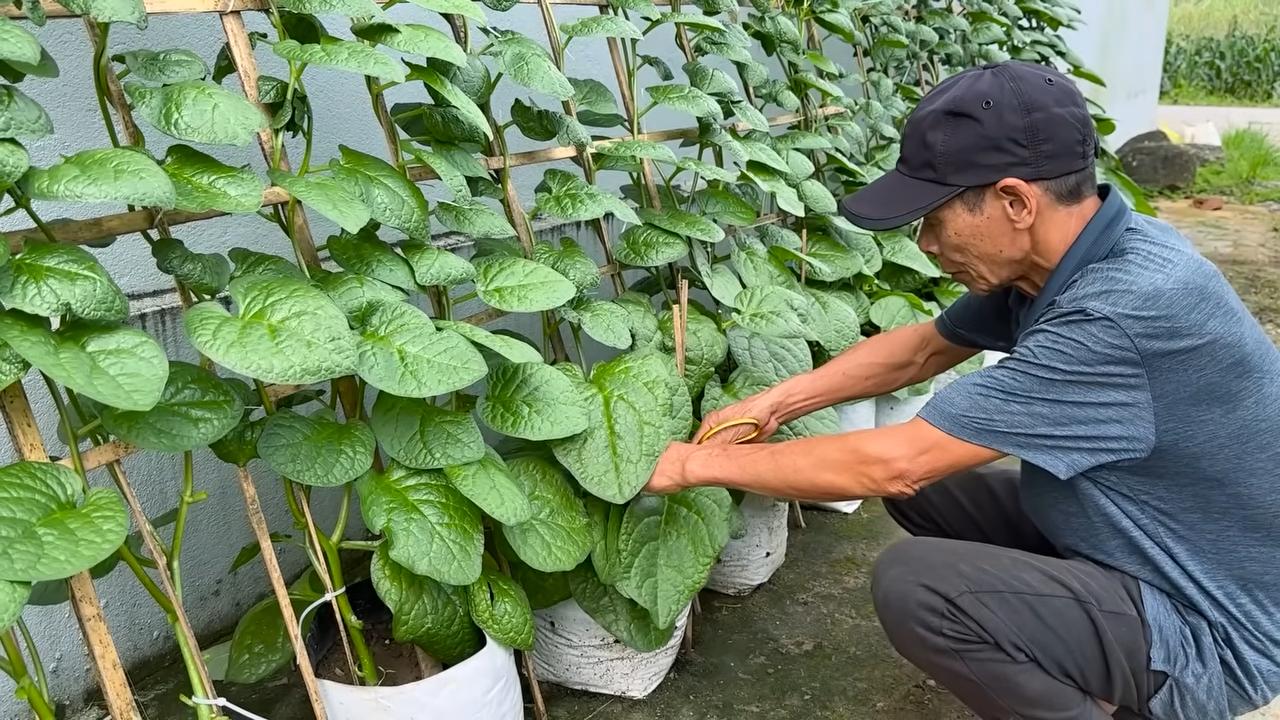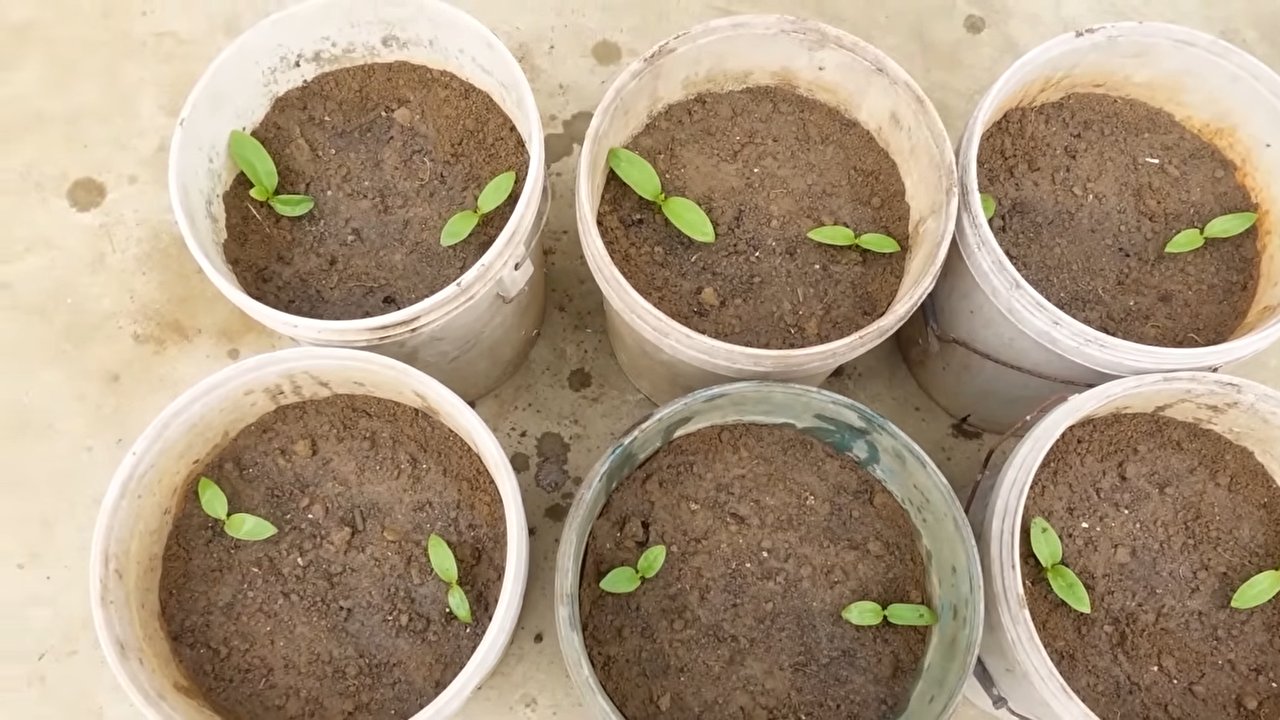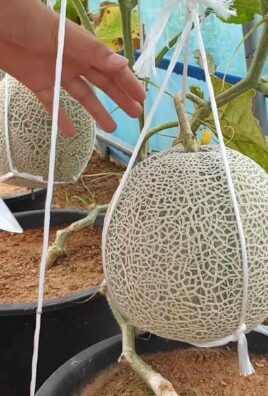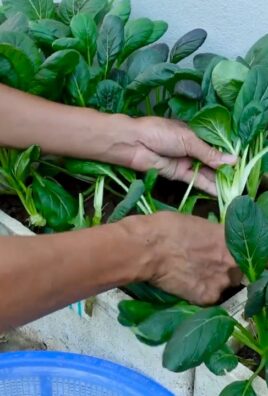Vertical gardening ideas are revolutionizing how we think about growing our own food and beautifying our living spaces! Forget sprawling gardens that demand acres of land; we’re going up, not out! Have you ever dreamed of a lush, green oasis but thought you didn’t have the space? Well, get ready to turn that dream into a reality with some clever DIY magic.
The concept of vertical gardening isn’t new. Think of the Hanging Gardens of Babylon, one of the Seven Wonders of the Ancient World – a testament to humanity’s long-standing desire to cultivate beauty and sustenance even without vast horizontal landscapes. While we might not be building wonders on that scale, the spirit of innovation remains the same.
In today’s world, where urban living often means limited space, vertical gardening ideas offer a practical and aesthetically pleasing solution. I know I’ve struggled with wanting fresh herbs and vegetables but feeling confined by my small balcony. That’s where these DIY tricks come in! They’re perfect for maximizing yields in minimal areas, adding a touch of nature to concrete jungles, and even improving air quality. Plus, let’s be honest, there’s something incredibly satisfying about growing your own food and flowers, especially when you’ve built the garden yourself. So, let’s dive into some easy and inspiring DIY vertical gardening projects that will transform your space and bring a little bit of the outdoors in!

DIY Vertical Garden: Bringing Green to Small Spaces
Hey there, fellow plant lovers! Are you dreaming of lush greenery but short on space? Don’t worry, I’ve got you covered. We’re diving into the wonderful world of vertical gardening! This is a fantastic way to bring nature into your home, even if you only have a tiny balcony or a small patio. I’m going to walk you through creating your own stunning vertical garden, step-by-step. Get ready to transform your space into a vibrant oasis!
Choosing Your Vertical Garden Style
Before we get our hands dirty, let’s talk about the different types of vertical gardens you can create. This will help you decide which one best suits your space, your budget, and your personal style.
* Pallet Garden: A classic and budget-friendly option. Pallets are readily available (often for free!) and offer a rustic charm.
* Hanging Shoe Organizer Garden: Perfect for small herbs and succulents. It’s super easy to set up and requires minimal effort.
* Stacked Planter Garden: A visually appealing option that adds height and dimension. You can use terracotta pots or plastic planters.
* Living Wall: A more advanced project that involves creating a self-sufficient ecosystem on a vertical surface.
* Gutter Garden: Repurpose old gutters into a unique and functional vertical garden.
* Trellis Garden: Ideal for climbing plants like tomatoes, cucumbers, and beans.
For this guide, we’ll focus on creating a Pallet Garden, as it’s a great starting point for beginners and offers a lot of flexibility.
Materials You’ll Need
Okay, let’s gather our supplies! Here’s what you’ll need to build your own pallet garden:
* A wooden pallet: Look for one that’s heat-treated (HT) rather than chemically treated (MB). You can often find these at local businesses, construction sites, or online marketplaces.
* Heavy-duty landscape fabric: This will line the back of the pallet and create pockets for your plants.
* Staple gun and staples: To secure the landscape fabric to the pallet.
* Scissors or a utility knife: For cutting the landscape fabric.
* Gloves: To protect your hands.
* Potting soil: Choose a good quality potting mix that’s suitable for the plants you want to grow.
* Plants: Select plants that are appropriate for your climate and the amount of sunlight your pallet garden will receive. Herbs, succulents, strawberries, and leafy greens are all great options.
* Measuring tape: To measure the landscape fabric.
* Sandpaper (optional): To smooth out any rough edges on the pallet.
* Wood sealant or paint (optional): To protect the pallet from the elements and add a personal touch.
* Safety glasses: To protect your eyes from staples and wood splinters.
Step-by-Step Instructions: Building Your Pallet Garden
Alright, let’s get building! Follow these steps to create your own beautiful pallet garden:
1. Preparing the Pallet
* Inspect the pallet: Carefully examine the pallet for any loose nails, splinters, or damage. Remove any loose nails and sand down any rough edges with sandpaper.
* Clean the pallet: Use a brush and soapy water to clean the pallet thoroughly. Rinse it well and let it dry completely. This will help prevent any mold or mildew growth.
* (Optional) Seal or paint the pallet: If you want to protect the pallet from the elements and add a personal touch, now’s the time to seal or paint it. Choose a sealant or paint that’s suitable for outdoor use. Let it dry completely before moving on to the next step. I personally love using a clear sealant to keep the natural wood look.
2. Creating the Planting Pockets
* Measure the landscape fabric: Measure the width and depth of each section of the pallet where you want to create a planting pocket. Add a few extra inches to each measurement to allow for overlap and secure stapling.
* Cut the landscape fabric: Cut the landscape fabric according to your measurements. You’ll need enough pieces to line the back of the pallet and create individual pockets for each planting section.
* Attach the landscape fabric: Starting at the bottom of the pallet, staple the landscape fabric to the back of the pallet, creating a secure pocket. Make sure the fabric is taut and there are no gaps. Overlap the fabric at the edges to prevent soil from leaking out. I like to double-staple for extra security!
* Repeat for each section: Repeat the process for each section of the pallet, creating individual planting pockets. Make sure each pocket is deep enough to hold a good amount of potting soil.
3. Planting Your Garden
* Add potting soil: Fill each planting pocket with potting soil, leaving a little space at the top.
* Plant your plants: Gently remove your plants from their containers and loosen the roots. Plant them in the potting soil, making sure the roots are well covered.
* Water your plants: Water your plants thoroughly after planting.
* Arrange your plants: Consider the mature size and sunlight requirements of each plant when arranging them in your pallet garden. Taller plants should go at the top, and plants that need more sunlight should be placed in the sunniest spots.
4. Maintaining Your Vertical Garden
* Watering: Water your plants regularly, especially during hot weather. Check the soil moisture by sticking your finger into the soil. If it feels dry, it’s time to water.
* Fertilizing: Fertilize your plants every few weeks with a balanced fertilizer.
* Pruning: Prune your plants regularly to keep them healthy and encourage growth.
* Pest control: Keep an eye out for pests and diseases. Treat any problems promptly with organic pest control methods.
* Sunlight: Make sure your plants are getting the right amount of sunlight. Move your pallet garden to a different location if necessary.
* Winterizing: If you live in a cold climate, you’ll need to protect your plants from frost and freezing temperatures. You can either move your pallet garden indoors or cover it with a protective blanket.
Plant Suggestions for Your Pallet Garden
Choosing the right plants is crucial for a thriving vertical garden. Here are some of my favorite options:
* Herbs: Basil, mint, oregano, thyme, rosemary, parsley, chives. These are great because they’re fragrant, useful in the kitchen, and relatively easy to grow.
* Succulents: Echeveria, sedum, sempervivum. Succulents are drought-tolerant and come in a variety of shapes and colors.
* Strawberries: A delicious and rewarding option. Choose everbearing varieties for a continuous harvest.
* Leafy Greens: Lettuce, spinach, kale, arugula. These are easy to grow and provide a fresh source of greens for salads.
* Flowers: Petunias, pansies, impatiens, begonias. Add a splash of color to your pallet garden with these beautiful flowers.
* Trailing Plants: Creeping Jenny, Dichondra Silver Falls, String of Pearls. These plants will cascade down the pallet, adding a touch of elegance.
Tips and Tricks for Success
Here are a few extra tips to help you create a successful vertical garden:
* Choose the right location: Consider the amount of sunlight your pallet garden will receive and choose a location that’s appropriate for your plants.
* Use good quality potting soil: Don’t skimp on the potting soil! A good quality potting mix will provide your plants with the nutrients they need to thrive.
* Water regularly: Vertical gardens tend to dry out more quickly than traditional gardens, so it’s important to water them regularly.
* Don’t overcrowd your plants: Give your plants enough space to grow and thrive.
* Add drainage: If your pallet garden is in a location that receives a lot of rain, consider adding drainage holes to the bottom of each planting pocket.
* Get creative! Don’t be afraid to experiment with different plants and arrangements. The possibilities are endless!
Troubleshooting Common Problems
Even with the best planning, you might encounter a few challenges. Here’s how to tackle some common issues:
* Plants are wilting: This could be due to underwatering, overwatering, or too much sunlight. Adjust your watering schedule and move your pallet garden to a different location if necessary.
* Yellowing leaves: This could be a sign of nutrient deficiency. Fertilize your plants with a balanced fertilizer.
* Pests: Inspect your plants regularly for pests. Treat any problems promptly with organic pest control methods.
* Mold or mildew: This could be due to poor air circulation. Improve air circulation by pruning your plants and spacing them

Conclusion
So, there you have it! Transforming your limited space into a lush, thriving oasis with these vertical gardening ideas is not just a trend; it’s a practical and aesthetically pleasing solution for modern living. We’ve explored a range of options, from simple pallet gardens to sophisticated hydroponic systems, each offering a unique way to bring the beauty of nature into your home, regardless of your square footage.
But why is this DIY approach a must-try? Beyond the obvious space-saving benefits, creating your own vertical garden is an incredibly rewarding experience. It’s a chance to connect with nature, nurture your green thumb, and add a personal touch to your living environment. Imagine stepping onto your balcony or into your kitchen and being greeted by a vibrant wall of herbs, flowers, or even vegetables – all grown with your own hands. The satisfaction is unparalleled.
Furthermore, a DIY vertical garden allows for complete customization. You’re not limited by pre-made kits or generic designs. You can choose plants that thrive in your specific climate and lighting conditions, ensuring a healthy and productive garden. You can also tailor the design to perfectly complement your existing décor, creating a seamless and harmonious look.
Consider these variations to further personalize your vertical garden:
* Repurposed Materials: Get creative with your containers! Old gutters, plastic bottles, tin cans, and even shoe organizers can be transformed into charming planters. This is a fantastic way to reduce waste and add a unique, eco-friendly touch to your garden.
* Living Walls: For a more ambitious project, explore the possibility of creating a living wall. These intricate systems involve attaching plants directly to a vertical surface, creating a stunning and immersive green display.
* Seasonal Planting: Rotate your plants seasonally to keep your vertical garden looking fresh and vibrant year-round. Plant spring bulbs in the fall, summer flowers in the spring, and hardy greens in the winter.
* Edible Gardens: Focus on growing herbs, vegetables, and fruits in your vertical garden. This is a great way to have fresh, organic produce readily available for your meals. Think strawberries cascading down a wall, or a fragrant collection of basil, mint, and rosemary just steps from your kitchen.
* Consider adding a drip irrigation system: This will help you water your plants more efficiently and evenly, and it will also save you time and effort.
We truly believe that anyone can create a beautiful and functional vertical garden, regardless of their experience level. The key is to start small, be patient, and experiment until you find what works best for you.
So, what are you waiting for? Gather your materials, choose your plants, and get started on your own vertical gardening adventure today! We’re confident that you’ll be amazed by the results.
And most importantly, we want to hear about your experience! Share your photos, tips, and challenges with us in the comments below. Let’s create a community of vertical gardening enthusiasts and inspire each other to grow greener, more beautiful spaces. We can’t wait to see what you create!
Frequently Asked Questions (FAQ)
What are the best plants for a vertical garden?
The best plants for your vertical garden depend on several factors, including your climate, the amount of sunlight your garden receives, and your personal preferences. However, some popular and reliable choices include:
* Herbs: Basil, mint, rosemary, thyme, oregano, and parsley are all relatively easy to grow in vertical gardens and provide fresh flavors for your cooking.
* Lettuce and Salad Greens: These leafy greens thrive in cooler temperatures and can be harvested regularly for fresh salads.
* Strawberries: These delicious berries are perfect for cascading down a vertical garden wall.
* Succulents: These drought-tolerant plants are ideal for sunny locations and require minimal maintenance.
* Trailing Flowers: Petunias, impatiens, and verbena are all beautiful trailing flowers that will add color and vibrancy to your vertical garden.
* Vegetables: Tomatoes, peppers, and cucumbers can be grown vertically with proper support.
Remember to research the specific needs of each plant before planting them in your vertical garden.
How do I water a vertical garden?
Watering a vertical garden can be a bit tricky, as the water tends to drain quickly from the top containers to the bottom ones. Here are a few tips for effective watering:
* Water Slowly and Evenly: Use a watering can with a long spout or a hose with a gentle spray nozzle to water your plants slowly and evenly.
* Water from the Top: Start watering at the top of your vertical garden and allow the water to trickle down to the lower containers.
* Check the Soil Moisture: Before watering, check the soil moisture in each container. The soil should be moist but not soggy.
* Consider a Drip Irrigation System: A drip irrigation system is a great way to automate the watering process and ensure that your plants receive consistent moisture.
* Water in the Morning: Watering in the morning allows the plants to dry out before nightfall, which can help prevent fungal diseases.
What kind of soil should I use in a vertical garden?
The best soil for a vertical garden is a well-draining potting mix that is specifically formulated for container gardening. Avoid using garden soil, as it can be too heavy and compact, which can lead to drainage problems. Look for a potting mix that contains ingredients like peat moss, perlite, and vermiculite, which will help to improve drainage and aeration. You can also add some compost to the potting mix to provide extra nutrients for your plants.
How much sunlight does a vertical garden need?
The amount of sunlight your vertical garden needs depends on the types of plants you are growing. Most herbs, vegetables, and flowering plants require at least six hours of sunlight per day. However, some plants, such as lettuce and shade-loving flowers, can tolerate less sunlight. Observe your plants carefully and adjust their location as needed to ensure that they are receiving the appropriate amount of sunlight. If you don’t have enough natural sunlight, you can supplement with grow lights.
How do I fertilize a vertical garden?
Vertical gardens, like all container gardens, require regular fertilization to provide the plants with the nutrients they need to thrive. You can use a liquid fertilizer or a slow-release fertilizer. Liquid fertilizers are applied directly to the soil and provide a quick boost of nutrients. Slow-release fertilizers are mixed into the soil and release nutrients gradually over time. Follow the instructions on the fertilizer package carefully to avoid over-fertilizing, which can damage your plants.
How do I prevent pests and diseases in a vertical garden?
Preventing pests and diseases is essential for maintaining a healthy vertical garden. Here are a few tips:
* Choose Disease-Resistant Varieties: When selecting plants for your vertical garden, choose varieties that are known to be resistant to common pests and diseases.
* Provide Good Air Circulation: Good air circulation helps to prevent fungal diseases. Space your plants properly and prune them regularly to improve air flow.
* Inspect Your Plants Regularly: Inspect your plants regularly for signs of pests or diseases. The sooner you catch a problem, the easier it will be to treat.
* Use Organic Pest Control Methods: If you do find pests on your plants, try using organic pest control methods, such as insecticidal soap or neem oil.
* Remove Diseased Plants: If a plant becomes severely diseased, remove it from the garden to prevent the disease from spreading to other plants.
Can I grow a vertical garden indoors?
Yes, you can definitely grow a vertical garden indoors! However, you will need to provide adequate lighting and humidity for your plants. Choose plants that are well-suited to indoor conditions, such as succulents, herbs, and leafy greens. You may also need to use grow lights to supplement the natural light. To increase humidity, you can mist your plants regularly or use a humidifier.
How do I choose the right container for my vertical garden?
The right container for your vertical garden will depend on the size and type of plants you want to grow, as well as the overall design of your garden. Consider the following factors when choosing containers:
* Size: Choose containers that are large enough to accommodate the root systems of your plants.
* Material: Containers can be made from a variety of materials, including plastic, metal, wood, and terracotta. Choose a material that is durable and weather-resistant.
* Drainage: Make sure that your containers have adequate drainage holes to prevent waterlogging.
* Weight: Consider the weight of the containers, especially if you are hanging them on a wall or fence.
* Style: Choose containers that complement your existing décor and the overall style of your vertical garden.




Leave a Comment